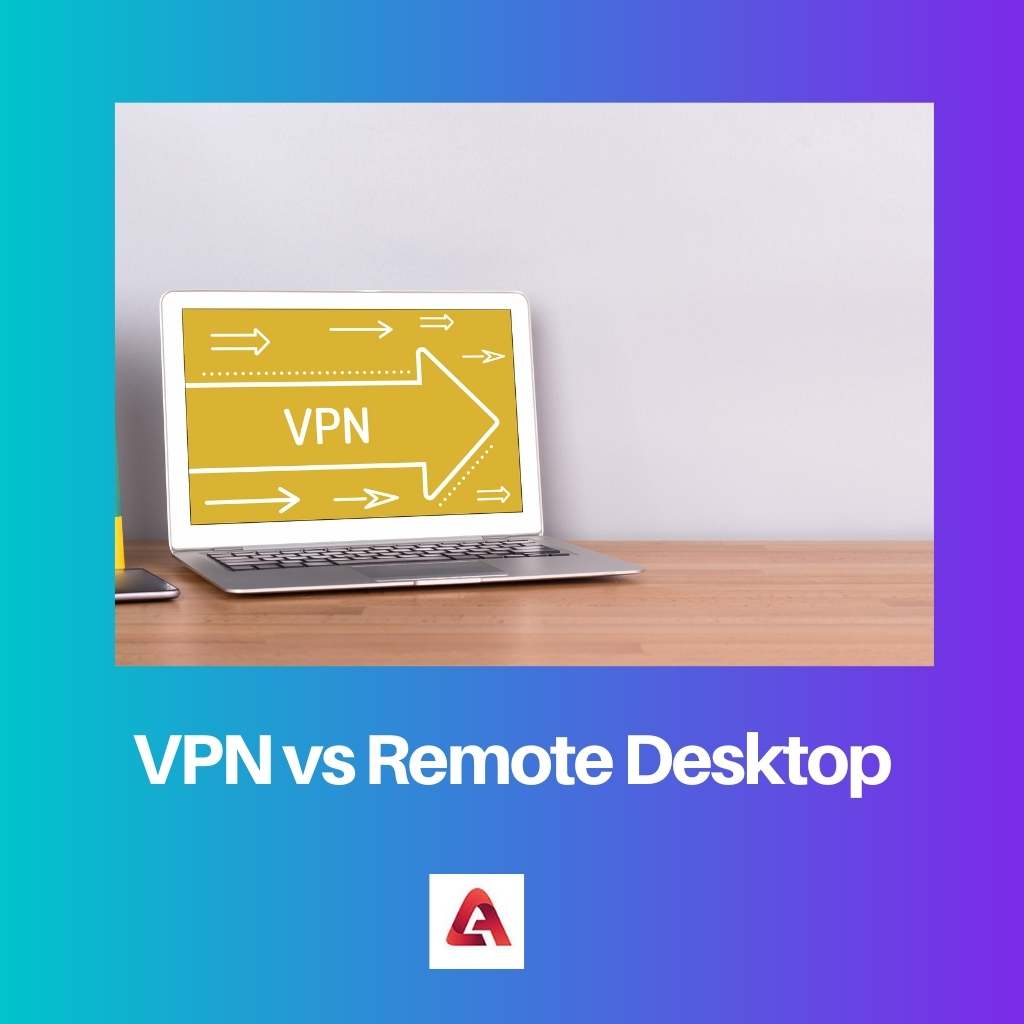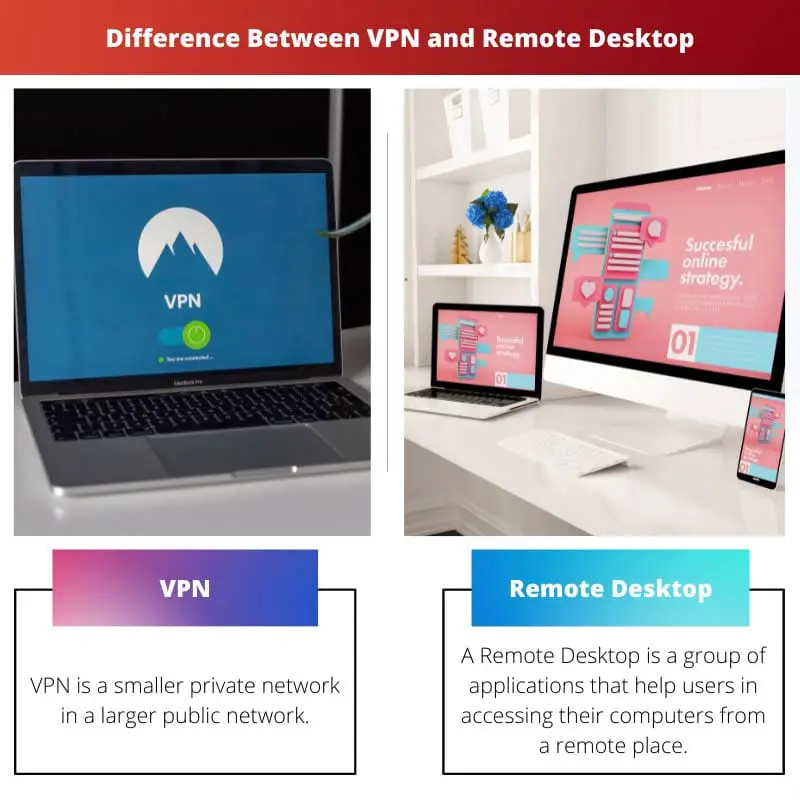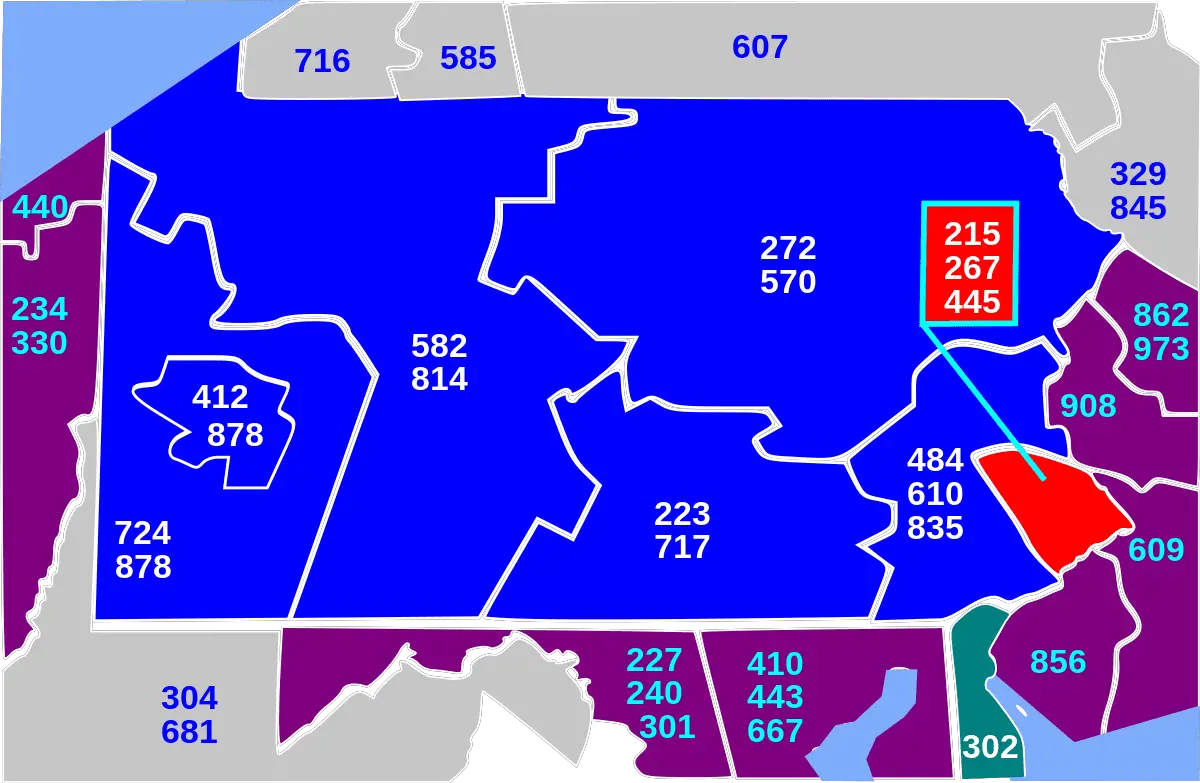Both VPN and Remote Desktop are boons of modern technology, but their functions are completely different. They are not the same thing.
Their security, purpose, and procedures of working are different. The right option for you can be decided after knowing the differences between the two.
Key Takeaways
- VPN is a private network that enables users to access the internet securely, while Remote Desktop is a software application that allows users to access a computer remotely.
- VPN encrypts all traffic, while Remote Desktop only encrypts traffic between the remote Desktop and the client.
- VPN requires a subscription fee, while Remote Desktop is free.
VPN vs Remote Desktop
The difference between VPN and Remote Desktop is that VPN is a private network inside a public network, whereas Remote Desktop is a pack of applications that will let the user access his/her computer from a distant place.
VPN gives the user a limited set of permissions, but Remote Desktop has no limitations.

VPN is a private, secure network that will work in a large network but will keep you secure as well as hold your identity. The IP address of your desktop changes here, so your location remains unknown
For individual use, this works effectively.
RDP or Remote Desktop is a set of applications that helps you to connect with a computer that is remote in location.
Through this connection, the remote computer and its files become accessible.
There are no limitations, the access is very flexible, and the whole computer becomes subject to your control.
Comparison Table
| Parameters of Comparison | VPN | Remote Desktop |
|---|---|---|
| Definition | VPN is a smaller private network in a larger public network. | A Remote Desktop is a group of applications that help users in accessing their computers from a remote place. |
| Full form | VPN stands for Virtual Private Network. | RDP stands for Remote Desktop. |
| Flexibility | Comparatively, it is less flexible. | It is much more flexible than a VPN. |
| Security | VPN is considered to be more secure. | It is considered less secure when compared to VPN. |
| Access grant | VPN gives access to only a network. | Remote Desktop gives control of the computer as a whole. |
What is VPN?
The Internet is a public network that is large and somewhat vulnerable. But VPN or Virtual Private Network is a comparatively smaller and private network in the larger public network like the internet.
The VPN has the capability of controlling the settings and can regulate the shared access of different devices that get connected to it.
VPN is a private network that will allow you to access a certain network.
If your workplace has a local network and that includes a printer, then you are eligible to use that printer by logging in to your office’s local network with the help of a VPN.
However, VPN can only give access to the already shared resources on the network. The flexibility is restricted. Resources like servers, printers, and folders need to be set up.
Otherwise, it is not possible to change or to access remotely. If the resources are not shared on the VPN, then they can not be subjected to remote access.
VPN is like a veil that hides your real identity while you browse on the internet. It makes you look like you belong to some other server in some other place.
Your device remains the same, but the IP address changes. And as a result, it offers security while you are accessing the Internet.

What is Remote Desktop?
A Remote Desktop is just as it sounds. It establishes a virtual connection between you and a remote computer.
With the use of a Remote Desktop, you can attain that computer’s screen from miles apart and be able to control it. All the files, as well as programs, can get accessed by the client’s computer.
It is also known as RDP. With the rise of Work From Home, Remote Desktop is becoming more popular each day.
If employees of an organization mostly work out of the office, then the company can opt for RDP to complete the work in a hassle-free manner.
Not only can one access a remote desktop, but one can also change the settings, launch applications, and do other tasks using it. The computer device will get completely controlled by you.
There are no limitations, but at the same time, it might appear vulnerable. RDP is not a good option for individual use, but it is ideal for organizational usage as it offers full control over the system.

Main Differences Between VPN and Remote Desktop
- The full form of VPN is Virtual Private Network, whereas Remote Desktop is also known as RDP.
- VPN is a smaller private network inside a larger public network. For instance, private networks inside the internet. On the other hand, a Remote Desktop is a group of applications that can give users access to their computers from a distant place.
- VPN gives access to only a network, but Remote Desktop gives control of the whole computer.
- The access given by VPN has limitations, but Remote Desktop does not have any limitations when it comes to giving access to the users.
- Comparatively, VPN is less flexible than Remote Desktop.
- VPN is considered to be much more secure, but comparatively, and Remote Desktop appears to be more vulnerable.





